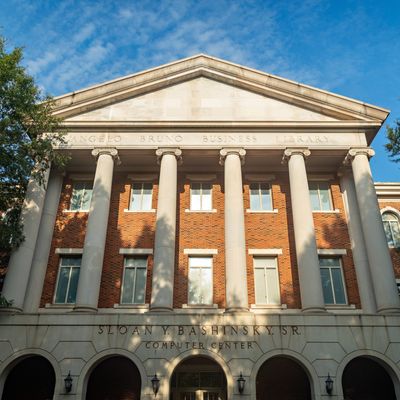
If you want a good, if rough, idea of the practical consequences of the COVID-19 pandemic’s effect on state and local governments and their services, you can take a look at what happened not that long ago during and after the Great Recession. And one of the most visible effects of that deep slump was a severe underinvestment in public higher education that led to sharply increased tuition and then student-loan debt. Some states (typically those governed by Democrats) reinvested in higher ed when the economy recovered; others (typically those governed by Republicans) did not. As Paul Friga noted in the Chronicle of Higher Education, the net effect was a system strained to the breaking point:
Most universities continued to raise tuition every year after the recession, averaging 4 percent annually for the next decade; public colleges increased tuition more than 37 percent from 2009 to 2019 …
Increasing tuition will no longer be an option for higher education in dealing with the current economic meltdown — primarily because families cannot afford to handle the burden. Tuition for all institutions jumped nearly 30 percent between 2007-8 and 2014-15, while real median income fell roughly 6.5 percent over the same time period. In 2020, student debt increased to more than $1.6 trillion, and as shown below, the increases in college costs and tuition have far outgrown corresponding increases in family incomes.
Public universities in some states that didn’t restore public support resorted to measures that took them further and further away from their mission as educators of children from families of modest means in their own jurisdictions, reports Kevin Carey in the New York Times:
Some universities offset budget cuts by aggressively recruiting foreign and out-of-state students, who pay much higher tuition rates. Alabama cut funding by nearly 40 percent after the Great Recession. Most of those dollars were never restored. In response, the flagship University of Alabama sent recruiters fanning out across the nation. Today, the majority of undergraduates in Tuscaloosa are from out of state.
Now public universities are in poor shape to sustain another plunge in public funding, to the point where Carey wonders if the term “public” even applies to them any more:
If Alabama makes similar cuts next year and tuition rises once again, the state’s ratio of student tuition to public funding will have gone from 2:3 in 2008 — two dollars of student tuition for every three dollars of public funding — to 7:1, or seven dollars of student tuition for every one dollar of public funding. In other words, the privatization of a public university system in a single generation.
Alabama would not be alone. If 2008-level cuts to state public higher education funding are repeated and replaced with tuition, 23 states will have a tuition-to-public-funding ratio greater than 2:1.
So the best-case scenario involves “public” universities catering to increasingly elite students, or at least those capable of taking on ever-higher debt loads. The worst-case scenario could mean schools incapable of attracting enough students and dollars going under, damaging the communities they serve (as educators and as employers). At lower levels of family and student income, the downward spiral in public support could turn genuinely vicious:
Low-cost community colleges may be unable to raise prices in response to budget cuts. Their financial losses would result in diminished capacity — fewer professors, classes, course sections and degree programs, at precisely the moment when those institutions could best help millions of unemployed workers go back to school. This, in turn, could create ripe conditions for predatory colleges offering worthless debt-financed degrees, a dynamic that led to tens of thousands of defaulted student loans after the last recession.
Next time you hear Mitch McConnell or Donald Trump demagogue about profligate liberal states begging for federal funds they should not need, keep in mind the kinds of choices they are implicitly urging on cash-strapped public officials. State officials do indeed have the option of making ends meet in a recession by failing to serve the people they represent. They can have health-care systems that leave the sick and unemployed behind; employment systems that keep workers earning at a subsistence level or less; and higher-education systems that make a college degree a token of privilege in the 21st century as it was in the 19th. In the end, in public goods as well as private goods, you get what you pay for.






























